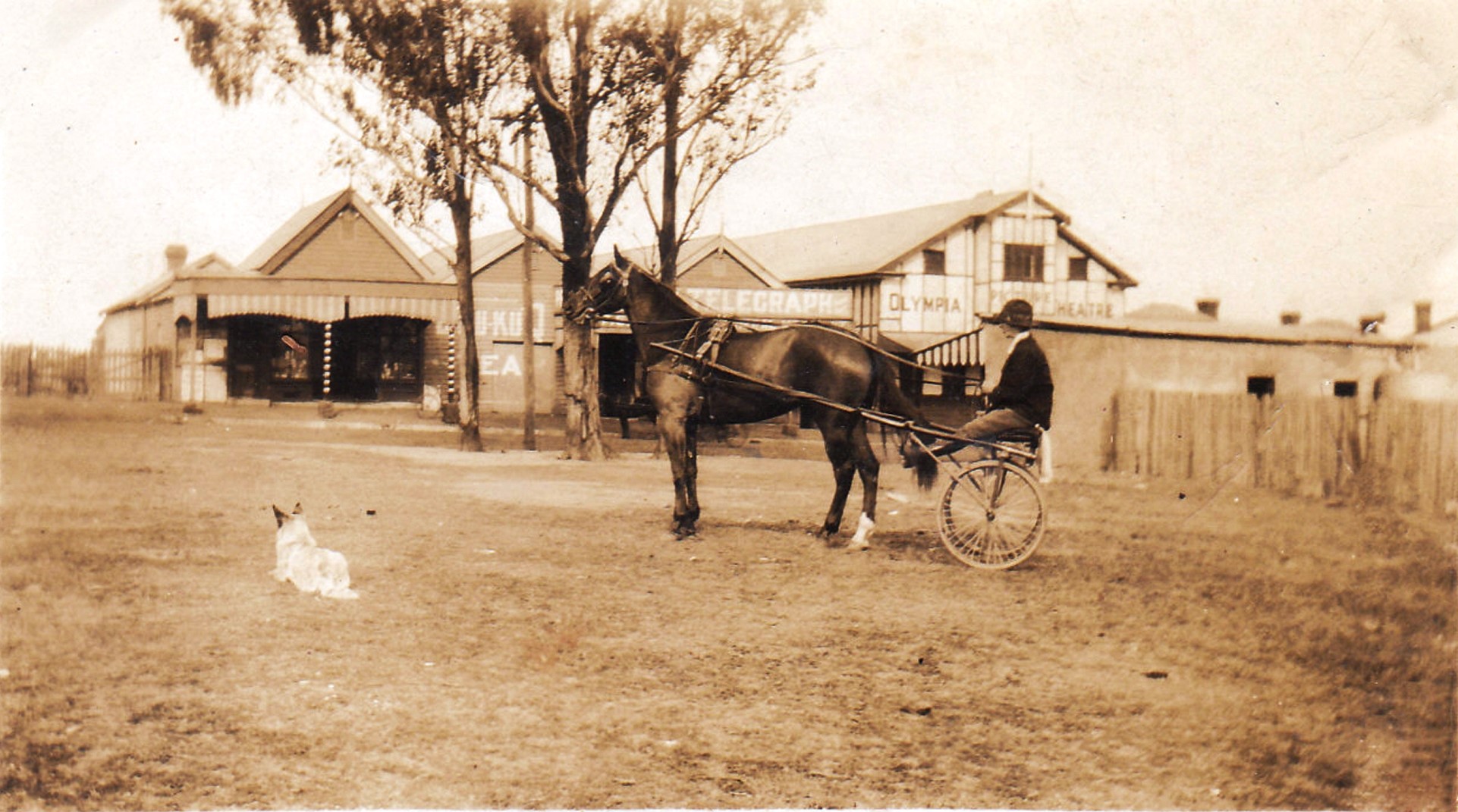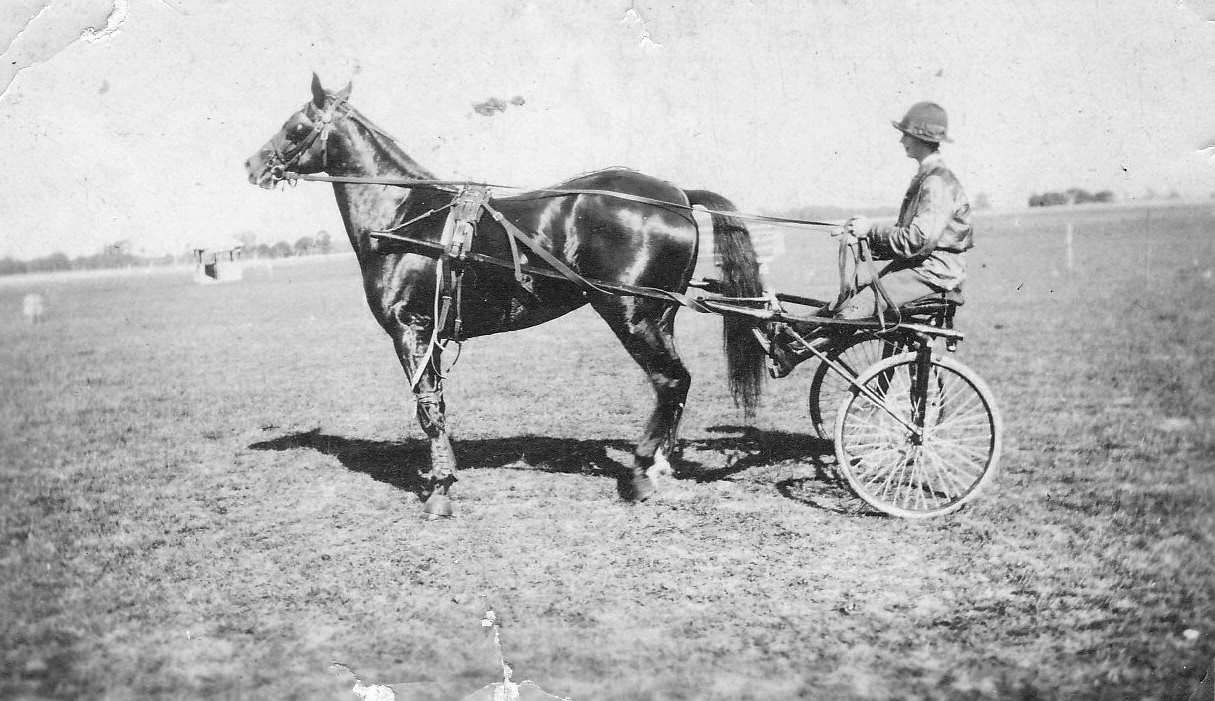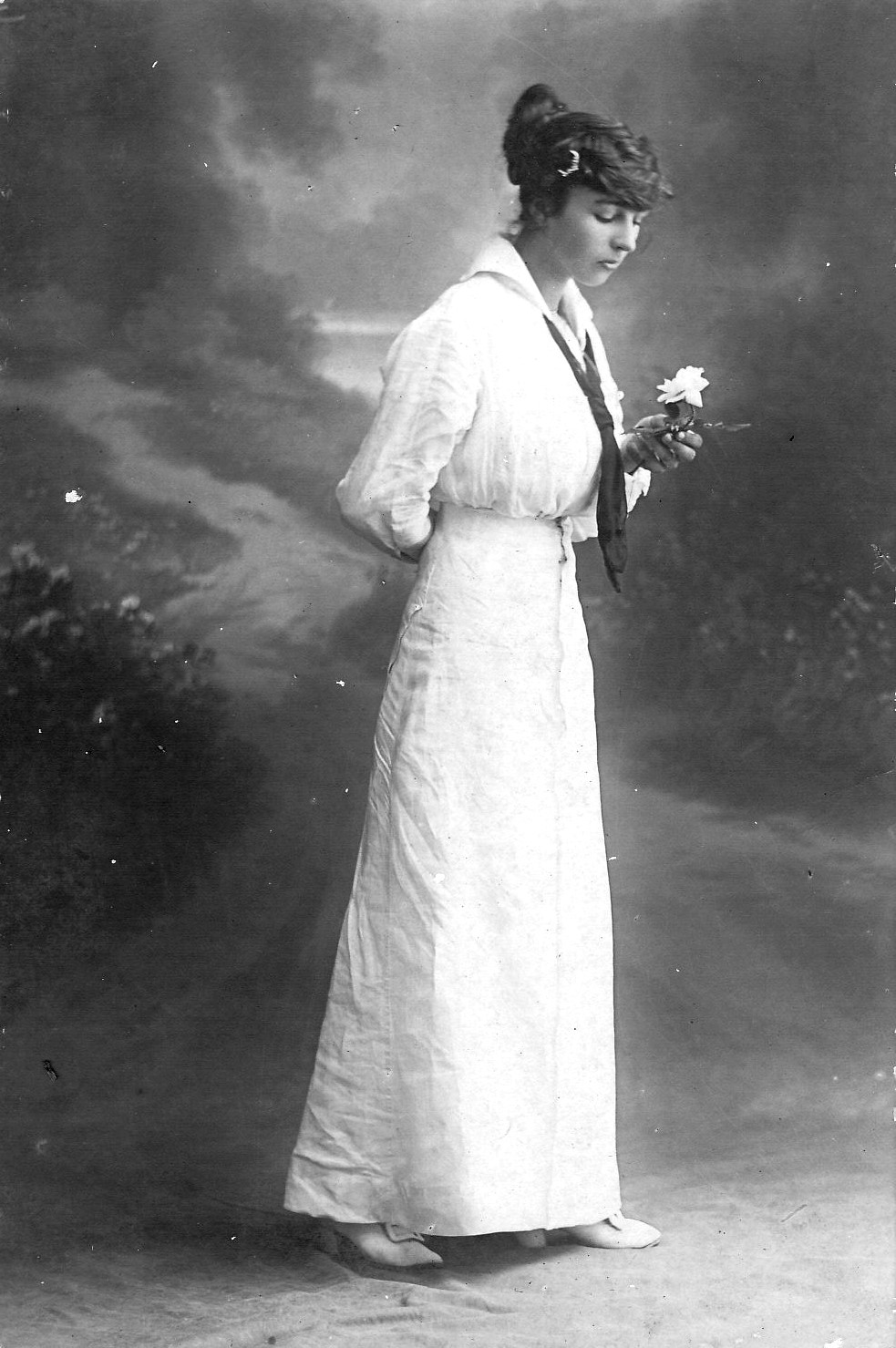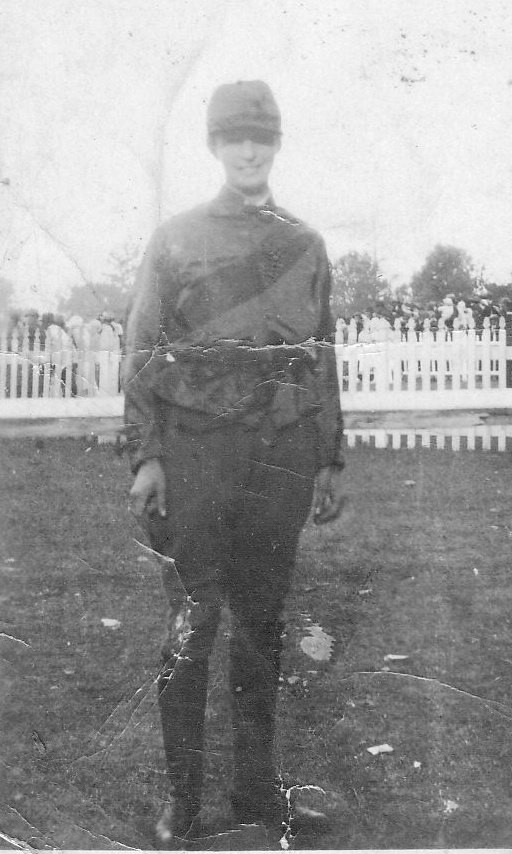by Michelle Nichols & Jonathan Auld
Women in sport are commonplace these days, but there was a time it was a rarity. Despite discord and discrimination throughout the years, by the twentieth century, females were able to participate in most sporting activities. One woman who made a difference was trotting trainer, Mrs Constance Moulds.
Trotting has long been a popular sport in the Hawkesbury area. The Hawkesbury Show featured trotting in the 1890s and a trotting racing club was established at Londonderry in 1912. There were many fine breeders and trainers operating in the district, including Andrew Town, Dr G. M. Slate, and Mr C. J. Roberts with studs at Hobartville, Clarendon and Marsden Park. Trotting was also very popular in Riverstone in the 20th century with the Woods, Dawson and Phillis families. Connie Moulds haled from Riverstone and with husband George were noted pioneers in the trotting sphere.
Constance was born in Rylstone in 1897. Her parents were Dudley Joseph Stephens and Mary Eleanor ‘Nellie’ Calvert who married in 1894 in the Cowra district. Dudley was a police constable from about 1890 until 1899 when he was reported as taking up a homestead selection of about 40 acres at Cattai and later poultry farming. The Stephens family moved to Rouse Hill in 1908. After a long illness, Nellie Stephens passed away aged 42, in 1916. She was buried at St. Matthew’s Anglican Cemetery.
Connie was employed as a clerk and at some stage met butcher, George Francis Moulds, the son of John Thomas Moulds and Henrietta Sherwood, long-time residents of Rouse Hill. The couple shared a love of horses and in 1919, married at Christ Church, Rouse Hill.
Shortly after their marriage it is recorded that George suffered with chronic rheumatism. In 1921, a benefit concert was held in his aid, in the Rouse Hill Anglican Church Hall. The rheumatism forced George to use crutches to move around. George worked as a smallgoods man, and then in 1925, was employed as a fruiterer. The couple acquired the mare, Tiny Loche and won her first three starts. Both worked hard, training horses for themselves, and sometimes for others.
Several years after their marriage, the couple moved to Riverstone and resided in Garfield Road where they focussed on training trotters and pacers. Their only child, Lawrence (Lawrie) was born in 1923. In the 1920s their horses included “Lady Helaine, Ella Huon, Unexpected, Bay Locke, Foch and Apia.”
A race was held at Menangle Park trotting meet in 1924, which allowed women to ride and drive a trotting horse, for the first time in NSW. The race, the Ladies’ Handicap, was very popular. Nine horses were entered in the race and Connie, with Innisfail, won as the favourite 7 to 4. She was also the first woman granted a trainer-driver licence to compete at registered meetings.
Connie frequently attended the meetings at the Richmond Trotting Club at Londonderry, up until the NSW Trotting Club introduced the rule which prohibited women from riding in any events that were not restricted to women. “The stewards later said that men might be inhibited by chivalry from protesting against interference by women drivers” and this obstacle impeded women’s trotting for several decades. But for George, “nothing delighted [him] more than seeing her winning events on the race tracks.”
A terrible tragedy occurred in 1932. While travelling on Windsor Road near Rouse Hill, George was thrown from his sulky when the horse he was training, was frightened by a truck. George fell heavily and his injuries included a fractured spine. Despite the outstanding medical treatment obtained, he lingered for two weeks before passing away. He was only 33 years old and was buried at Rouse Hill Cemetery. George was described with having “a quiet and retiring disposition” and as one who had suffered “more than his share of sorrow.”
Connie maintained her interest in training and she was given official permission to continue preparing her horses. Regardless of her involvement in trotting, things were financially tough, raising her son on her own, during the depression and through World War 2. To make ends meet she delivered ice around the town by sulky. In those days most people still had iceboxes which required blocks of ice to keep perishables cool. She also operated a fish and chip shop in Garfield Road, almost opposite the theatre, which was popular during the movie intervals. Connie attended and performed in many of the local and country shows, winning races and breaking records.
In 1941, 18 year old Lawrie enlisted in the Army serving until he was discharged in 1945 when he returned to Riverstone and married in 1949. From a young age, Connie coached her son, in all things trotting and he went on to become a leading reinsman, and renowned trainer.
Machine Wood was a gelding that brought the Moulds family luck. It was rescued from the knackery and after completing his training, was Lawrie’s first win in 1944 at Harold Park. Machine Wood went on to win at the first night meeting at Harold Park in 1949. Night racing at Harold Park went on to be extremely popular during the fifties with large crowds in attendance. However Connie was not allowed to compete at Harold Park and she had to transfer her horses to a male, to participate. Connie got around the system by entering the horses in Lawrie’s name.
Known as ‘the little mother’ – she was short and recognisable for wearing jodhpurs and a wide-brimmed hat but hardly ever seen in a dress. A pioneer in the trotting field, Constance Moulds died 27 September 1972, aged 75 and is buried beside her husband at Rouse Hill Cemetery. Her son Lawrie passed away in 1982 aged 58.
With thanks to Larry and Leanne Moulds for assistance in preparing this article.

Photo: Larry and Leanne Moulds

Photo: Larry and Leanne Moulds


